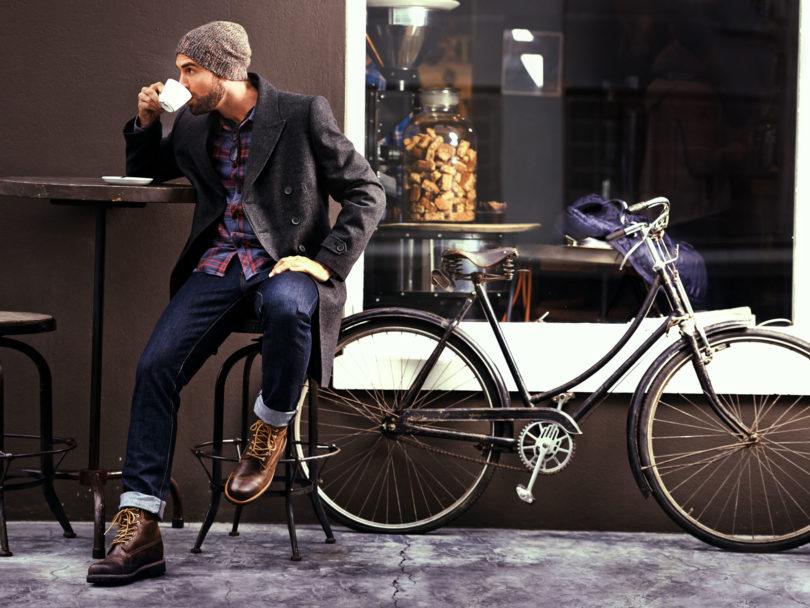When the springtime sun comes out from behind the gray skies of winter, the temperatures start to rise and the flowers bloom. You, too, are ready to come out of winter hibernation, put down the hot comfort food and be more active. The saying might claim that summer bodies are made in the winter, but spring isn’t too late to jump on the bandwagon.
But how best to incorporate exercise into your busy work and family lives? It’s already difficult trying to maintain a decent work-life balance without trying to throw extra exercise into the mix. Besides, where would you fit it into your daily schedule? If you work out in the morning, you might feel rushed to start your day, adding stress to the rest of your work. Exercise in the evening and you might feel like you’re missing out on quality family time.
What’s the perfect solution? Transform your commute into an opportunity for exercise — on your bicycle.
Riding your bike to get to and from work makes it easy to incorporate exercise into your daily routine without feeling like you’re missing out or taking away from the rest of your life. A flat, five-mile commute will burn about 500 calories, making biking to work an ideal way to get your daily physical activity. Meanwhile, you save money on gas, reduce the daily aggravation that can come with dealing with other drivers and you can experience your commute in a completely new and fresh way.
Plus, biking to work just might make you a happier and more productive person.
A study published in the Journal of Transport & Health found that so-called “active commuters” were happiest with their commute trips to and from work. According to the study, using one’s daily commute productively in ways such as biking led to a higher sense of well-being than those who spent their commutes sitting in their cars or on buses and subways.
Consider the Danes: In Copenhagen, the capital city of Denmark, 50 percent of its citizens bike to work or school every single day. In fact, there are more bikes in Copenhagen than inhabitants. They must be doing something right — as a country, Denmark consistently ranks at or near the top of the list of the happiest countries in the United Nations’ World Happiness Report.
Cycling, like swimming, is a great form of exercise for those who find running, jogging or even walking too hard on the joints. Not only is riding a bike gentler to the joints, pedaling gives a boost to your muscles, strengthening your thighs, hips and rear end.
Biking to work can also help you keep more of your hard-earned money. According to the Sierra Club, it costs about $300 per year to keep bikes in shape — nearly 30 times less than cars. “If American drivers were to make just one four-mile round trip each week with a bicycle instead of a car, they would save nearly 2 billion gallons of gas,” the environmental group says.
However, when you start your work day with exercise and fresh air on a bike, you might also start your day with sweat stains, weather or inconsiderate drivers on the road. With these kinds of obstacles in between you and a healthier commute, it can be tempting to leave the bike collecting dust at home and opt for the four-wheel gas guzzler parked in the garage.
Once you’re ready to give biking to work a try, make sure you familiarize yourself with the cycling rules of the road, such as obeying traffic lights, keeping to the right, using proper signals when turning and always passing on the left. Remember to be courteous to other cyclists and yes, to car drivers.
Finally, don’t forget to protect your head! Most state helmet laws don’t apply to adults, but that shouldn’t keep you from donning one. Head injuries are responsible for 85 percent of biking-related deaths, according to the Center for Head Injury Statistics, and 80 percent of bicyclists killed are 18 and older. Helmets reduce the risk of head injury by as much as 50 percent. So make sure you wear one on your commute.
Here’s how to prepare for switching gears on your morning and evening commute:
Wear athletic wear on your ride.
Bring work clothes in a backpack. There’s nothing worse than wearing sweaty work clothes all day long. If you can avoid wearing your work clothes while you ride, the more comfortable you’ll be for the rest of your shift.
Prepare for the inevitable.
Invest in an over-the-shoulder bag or backpack that has room to carry everything you’ll need for your day. This includes travel-sized toiletries, a hand air pump and patch kit for your tires, water and everything else you need for your work day.
Don’t forget the snacks.
When you transform your morning from a sedentary to active commute, you’ll be burning more calories throughout your day. This could lead to increased hunger and cravings. Pack healthy, protein-filled snacks to keep you full throughout the day.
Try it on a weekend first.
Get to know the roads, the route you’ll take and familiarize yourself with the timing on a day off. By practicing your commute, you’ll have a better idea of what you’re doing, which will increase your confidence and motivation to ride on Monday morning.
Take a class to build up your confidence on the road.
Bikeleague.org, the official site of the League of American Bicyclists, provides a search option for finding local road biking classes in your area and offers many other cycling resources. The website also offers tips for finding the best kind of bicycle to suit your needs.







